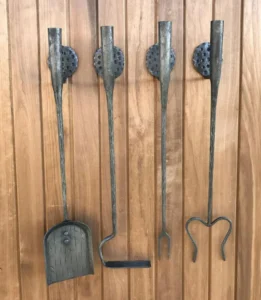Remember those chilly winter evenings gathered around the old stove, where the warmth was as much about family as it was about the fire? If you grew up in a home with a wood or coal-burning stove, you’ll recall the distinct clink and clank of the stove poker, a trusty tool used to stoke the flames and keep the home cozy. That antique stove poker, often passed down through generations, wasn’t just a tool; it was part of the family’s daily rhythm.
Crafted from durable materials like wrought iron or steel, antique stove pokers were built to last. These essential tools featured a pointed end for adjusting coals or wood logs and a curved end for handling hot grates. Each design detail was tailored to ensure the fire burned just right, essential for cooking and heating in an era before modern conveniences took over.

In the days before automatic heating, managing a stove was an art that required patience and skill. The stove poker was a central tool in this daily chore, vital for controlling the heat source that cooked meals and warmed houses. It represented self-reliance and practical skill, qualities highly valued in households during the mid-20th century.
Antique stove pokers evoke memories of a time when family life revolved around the hearth. Each poke and prod of the fire was a moment of interaction—between people and the elemental force of fire—that modern technology seldom offers. The poker’s role extended beyond functionality; it was a symbol of the care and attention that went into maintaining the heart of the home.

In conclusion, the antique stove poker is more than a relic; it’s a piece of cultural heritage that connects us to the past’s tactile experiences and communal ways of life. It reminds us of the value of manual skill and the intimate interaction with nature’s elements, enriching our understanding of history and our place within it.





